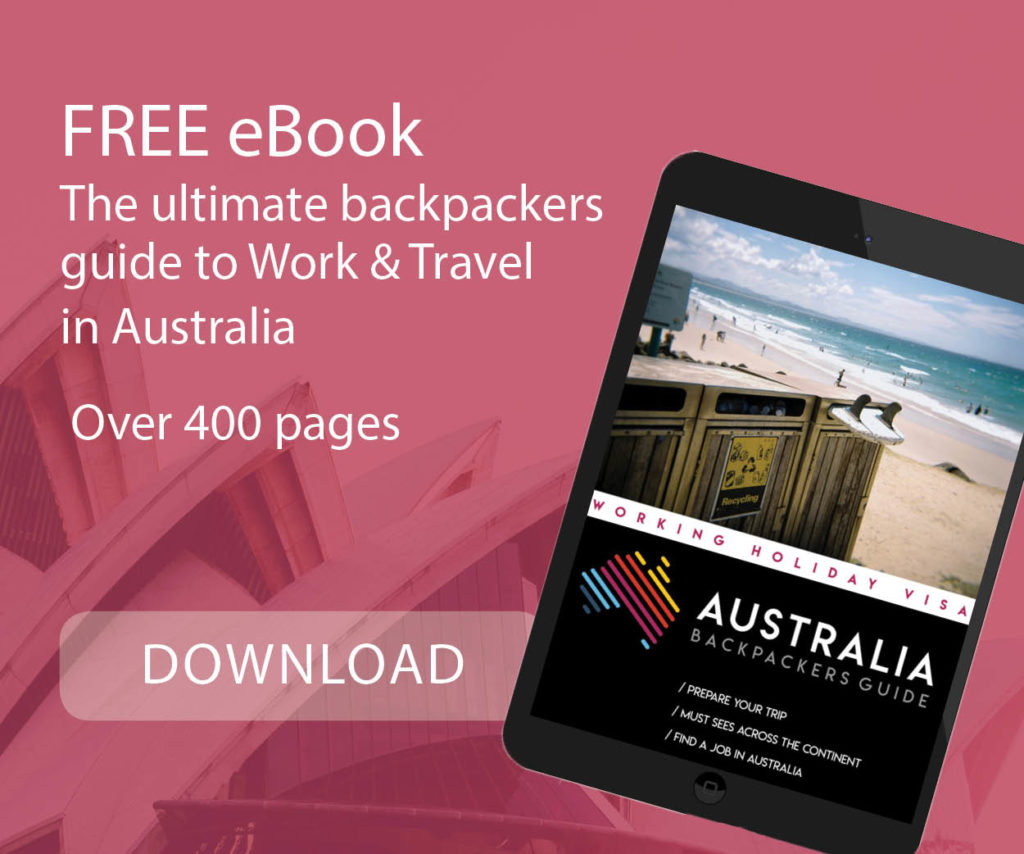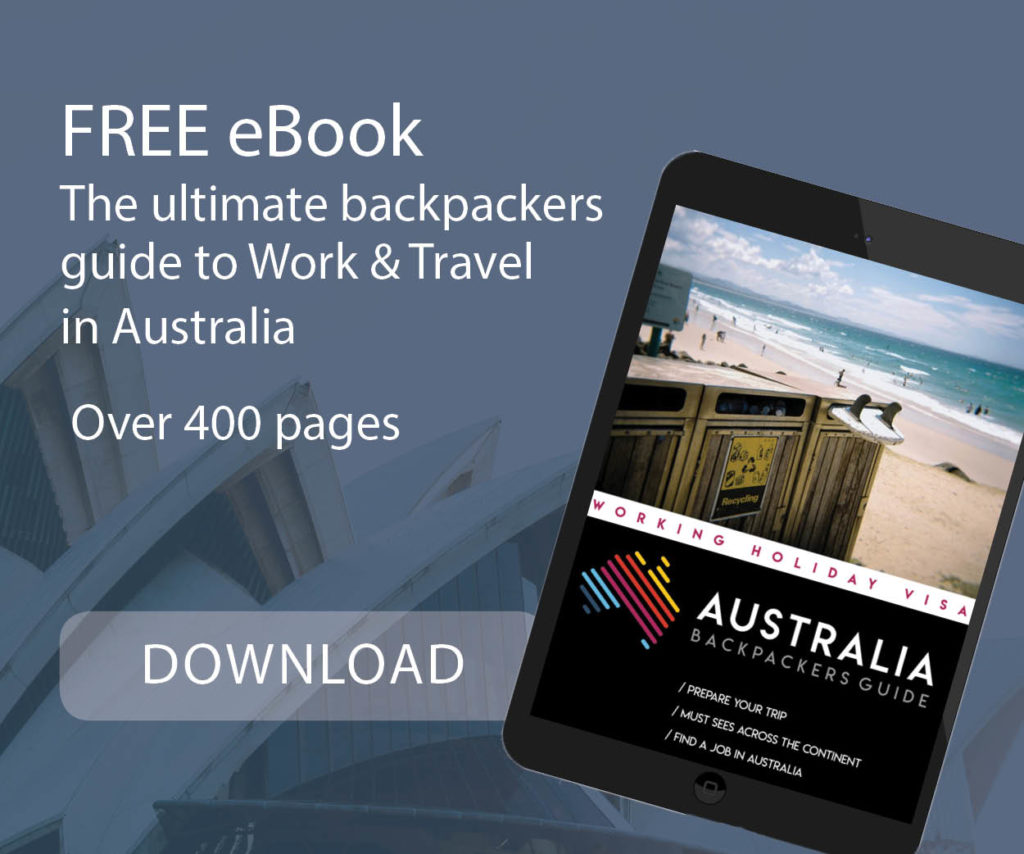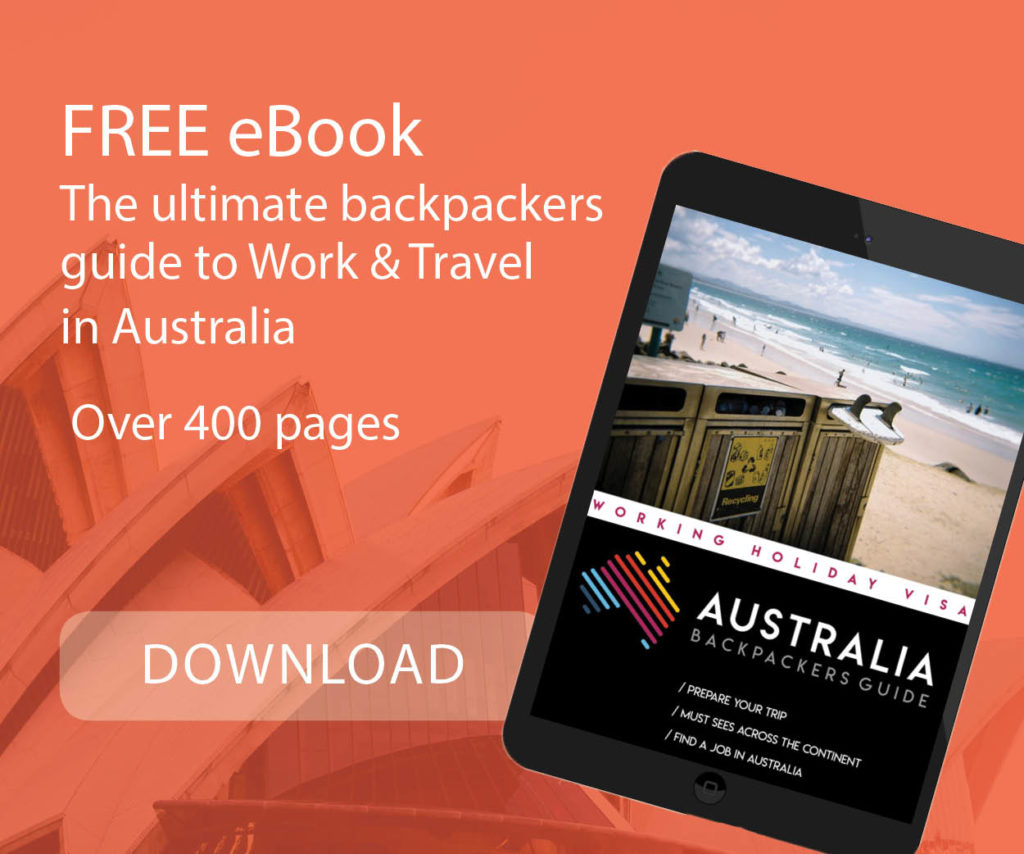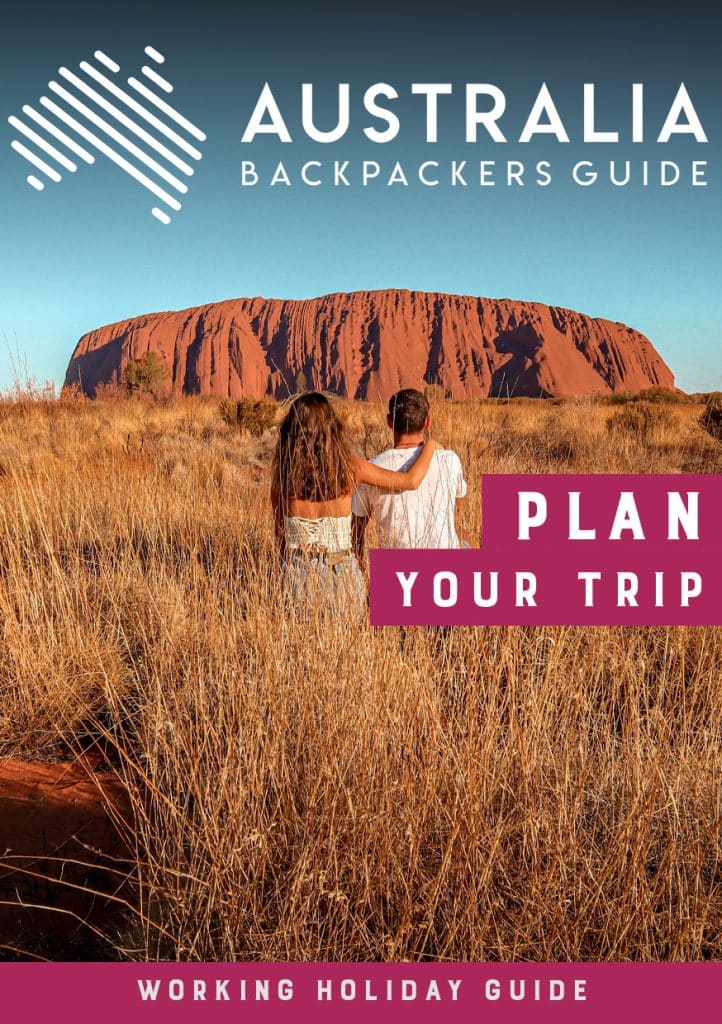After dreaming about it for so long, you’ve finally decided to embark on a Working Holiday Visa (WHV) adventure in Australia! Now, you’re wondering how to best prepare for your trip. No worries—you’re in the right place! We’ll guide you through all the essential steps to take before heading to Australia with a WHV. Here’s everything you need to know before you go!
Table of Contents
What is the Working Holiday Visa or Work and Holiday Visa?
A Working Holiday Visa encompasses subclasses 417 and 462. It’s a visa program that grants individuals the opportunity to travel and work in Australia for up to three years. The age limit to be eligible for this program is typically set at 30 or 35 years old, depending on your country of residence. Notably, the age limit for UK passport holders is now to 35 years old (inclusive). If you meet all the requirements and fulfil your specified work obligations in Australia, you can even renew your WHV for an additional year, twice.
The Australian government has set clear guidelines on the types of jobs and eligible regions for Working Holiday Visa (WHV) renewal. While fruit picking remains one of the most popular options among backpackers, there are many other job opportunities available. These include hospitality (hotels and restaurants), housekeeping, construction, retail, and more.
Many seasoned backpackers will attest that embarking on a Work and Travel journey in Australia is a life-altering experience. It provides a unique opportunity to immerse yourself in a different culture, or indulge in diverse experiences while realizing long-held dreams.
Best Time to Visit Australia: When Should You Go?
Choosing the right time to visit Australia depends on a variety of factors, including your personal plans and your situation back home. Whether you have exams to complete before your departure or a fixed-term contract to consider, there are several considerations to keep in mind.
Understanding Australia’s Seasons
Australia’s climate varies widely depending on the region:
✔️ Southern Cities (Sydney, Melbourne, Perth, Adelaide): Winter (June–August) can be chilly, so bring warm clothes. Summer (December–February) is peak travel season with great weather but higher costs.
✔️ Northern Regions (Cairns, Darwin, Broome): The wet season (November–March) brings heavy rains and humidity, while the dry season (April–October) is ideal for exploring.
Job Opportunities & Budget Considerations
✔️ If you’re looking for hospitality jobs, peak tourist seasons (summer months) are the best time to arrive.
✔️ If you’re considering farm work or fruit picking, check the harvest seasons to align your trip with the best job opportunities.
✔️ Flights and accommodation tend to be more affordable during the shoulder seasons (March–May & September–November).
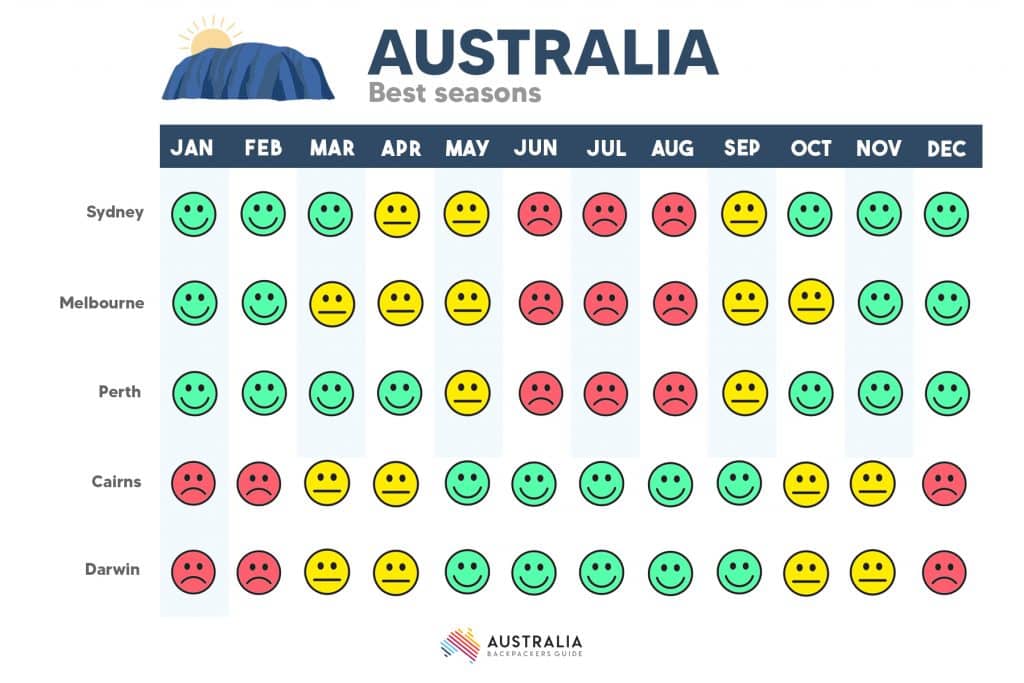
Plan Your Trip to Australia
How Much Time Should You Allocate for Trip Preparation?
The timeline for preparing your trip to Australia can vary widely among travelers. Some meticulously plan their journey a year in advance, while others prefer a more spontaneous approach and organize everything within three months or less. To ensure ample time for comprehensive preparations, we recommend allowing a window of around 6 months. Regardless of the duration you allocate, the essential steps remain the same.
Organising Your Visits and Activities / Excursions
Before embarking on your Australian adventure, compile a list of the places you’re eager to explore. Some may have their hearts set on experiencing the pristine beauty of Fraser Island, while others can’t imagine missing the breathtaking New Year’s Eve fireworks in Sydney. Create a list of your must-see destinations and experiences. If you have specific locations or dates in mind, plan your itinerary accordingly.
For special activities like diving in the Great Barrier Reef or swimming with whale sharks at Ningaloo, it’s crucial to make advance reservations. Additionally, research the optimal seasons and timings for your chosen excursions and activities.
Estimate Your Budget
Estimating your budget is a crucial step to ensure you are financially prepared for your Australian adventure. In addition to expenses incurred in your home country before departure, you’ll need to account for expenses while in Australia. Here’s a rough estimate to help you get started:
Pre-Departure Expenses
Before you leave, you need to invest a certain amount of money in preparing for your trip: if you take into account the cost of your visa, passport, plane ticket and health insurance, plus the minimum amount of funds required by the Australian government, we recommend that you budget for €5,500.
- Visa‘s fees ($650 or around €410)
- Passport (if you need it done or redone)
- Translation of your Driver’s Licence (if not in English)
- Purchase of plane ticket (1400€ way back)
- Health insurance (€400 – less if you do benefit from Medicare)
- Minimum Funds Required by the Australian Government ($5000)
🪪 Official NAATI Translation of Your National Driver’s Licence
Getting an accredited translation is the fastest and most reliable way to drive legally in every Australian state. Our NAATI‑certified translators will translate your French, Belgian, Swiss, German, Deutsch, Italien, Spanish, Czech, Russian licence within 24 to 48 hours!
Cost of Life in Australia
If Staying in a City
You’ll need to set aside a certain amount of money for security during your first few weeks in Australia. You’ll need to budget at least $600 per week per person. This includes accommodation (around $400/week), food ($200), public transport ($20-50) and outings. For your accommodation on arrival, the best options are youth hostels and Airbnb to give you time to find a flat share.
If on a Road Trip
Calculate the budget for purchasing a vehicle. You can find budget-friendly cars starting at $4 000 and fully-equipped vans for up to $10 000. Prices may fluctuate based on location and season. Additionally, consider expenses for fuel and food. Generally, life on the road will be more cost-effective than living in a city.
Essential Pre-Departure Steps
Get your Working Holiday Visa – WHV
Your gateway to Australia, the WHV allows you to legally live and work in the country for up to a year. Apply at least 3 months in advance through the Australian government website. The online application takes approximately an hour to complete, and WHV applications are typically processed swiftly. The cost of the visa is $650 (up to July 2025).
⚠️ Warning
Some websites offer to apply for a visa for you, but it is simply a scam. You are the only person authorised to submit your visa application, and this via the Australian immigration site.
Book your Plane Ticket
The plane ticket to Australia represents a certain investment. Many airlines fly to Australia. These include Qantas, Emirates, Etihad and Singapore Airlines.
Some companies offer stops on the way for the same price … this could be the opportunity to make the first stop in the sun!
Prices of airline tickets vary greatly with the seasons and the time you are making your booking.
Please note that airfares vary considerably according to the season. High season is from December to March, low season from April to October. Expect to pay at least €900 for a one-way ticket, and at least €1,500 for a round-trip from London to Sydney. But this may be higher during school vacations or at certain times of the year (July – August and December – January). It’s more cost-effective to book a return ticket, but of course a one-way flight gives you much greater flexibility.
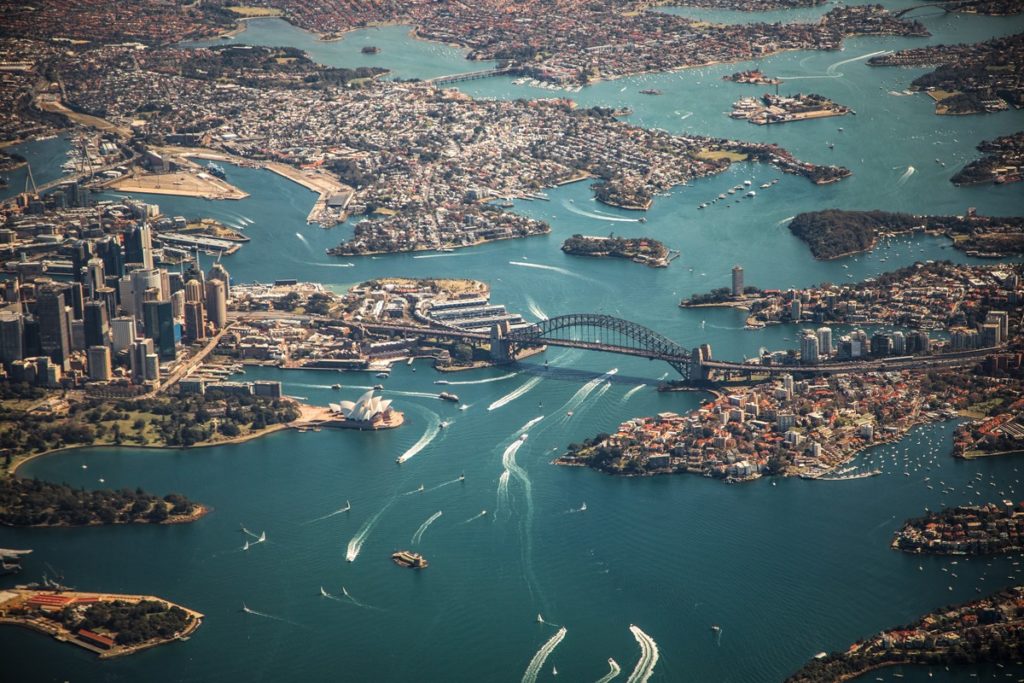
Get your Travel Insurance
The Australian Government has agreements with New Zealand, the United Kingdom, Ireland, Sweden, the Netherlands, Finland, Italy, Belgium, Malta, Slovenia and Norway. This means that residents of these countries can benefit from Medicare with some essential medical treatments while visiting Australia.
However, we suggest that you take out private health insurance to travel to Australia. Backpacking through Australia is only safe if you know you don’t have to worry about health costs.
💸 10% Discount on your Insurance Policy
Find here all the information you need and get your 10% Go walkabout promo code for any policy.
Essential Administrative Steps Before Leaving for Australia
Before embarking on your Australian adventure, it’s crucial to take care of a few administrative formalities in your home country to avoid unnecessary complications while abroad.
✔️ Housing & Utilities: If you’re renting, make sure to terminate your lease or sublet legally. Cancel utilities like electricity, water, and gas, and inform your internet provider to avoid ongoing charges.
✔️ Bank & Mail: Notify your bank about your travels to prevent any issues with international transactions. Consider setting up online banking if you haven’t already. Redirect your mail or assign someone to handle important documents while you’re away.
✔️ Taxes & Government Benefits: If you receive any government assistance, check the regulations—in many cases, claiming benefits while abroad is not allowed. Inform the tax office if necessary.
✔️ Phone Plan: Either cancel, suspend, or switch to a more travel-friendly plan to avoid unnecessary fees. Many opt for a prepaid SIM card upon arrival in Australia.
Preparing for Your Arrival in Australia
📑 Necessary Documents
Passport
If you do not have a valid passport or if it’s approaching expiration, it’s essential to request a new one. Your passport is not only required for entry into Australian territory but also for various essential procedures such as purchasing plane tickets and applying for your visa.
To obtain or renew your passport, you’ll need to submit an application to your local town hall along with the required supporting documents. You can opt to visit the office in person or initiate the process with a pre-request online. The cost for a passport (first-time application or renewal) is £75.50 when applying online in the UK.
International driving license
If you plan to drive in Australia and your current driver’s license is not in English, obtaining an international driver’s license is crucial. Please check the specific requirements and process for obtaining this license in your country, as it should be completed before your departure to Australia. If you do not have the time to get a International Licence before leaving your home country, you always have the option to do a NAATI translation fo your licence.
🗺 Choosing Your City of Arrival in Australia
Australia boasts several vibrant cities, each with its unique advantages and characteristics. Here’s a brief overview of some major cities to consider for your arrival:
- Sydney is often seen as the most “logical” choice to start your Working Holiday Visa (WHV) adventure. It’s the most popular tourist destination in Australia and offers a wide range of opportunities.
- As the second-largest city, Melbourne exudes European charm with its narrow streets and Victorian architecture. It’s a compelling choice for those seeking a cosmopolitan atmosphere.
- Canberra serves as the official capital of Australia, known for its modern architecture and political significance. However, it may not be the top preference for backpackers.
- Brisbane attracts backpackers due to its favorable climate (with approximately 300 sunny days per year) and proximity to the Gold Coast.
- Situated on the west coast, Perth is a growing city that appeals to those eager to explore Australia’s wilderness.
- Known as the “city of churches,” Adelaide is more alluring than it may seem at first glance.
- Located in the far north, Cairns is a small paradise and serves as a perfect gateway to the Great Barrier Reef.
- In the northern reaches of the country, Darwin offers a culturally rich experience with a significant Aboriginal population and a prominent Asian cultural influence.
Your choice of arrival city should take into account various factors, including your arrival time, vehicle purchase plans, job-seeking objectives, and personal preferences. Carefully consider these criteria to make the best decision for your Australian adventure.
🏙 Which city to choose for your arrival?
Choosing the right city of arrival will allow you to save money, help you with your job search and enjoy the best climate during your trip.
☀️ Seasons in Australia
Australia is located in the Southern hemisphere, which means that the seasons are the opposite of those in the north. When it’s summer in Europe, it is winter in Australia and vice versa. The country is divided by the Tropic of Capricorn, to its the north, the climate is warmer, while in the south it is more temperate.
Here is an overview of the different climate zones in Australia:
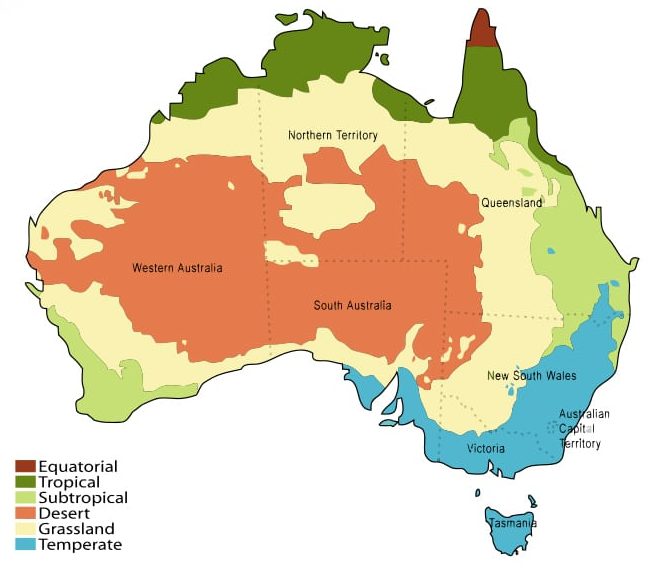
- Temperate zone includes the south of the country (climate similar to European countries)
- Subtropical zone (the middle of the country with pleasant temperatures all year round)
- Tropical area with the wet season from November to January, cyclones in October-November and the dry season from April to November with tropical temperatures
- Desert area, land inside the country with very hot days and very cold night
The best time to visit Australia depends on its region. In the Northern half, the months from March to August are recommended and for the Southern half, it is the opposite! In short, for those who wish to travel for a year around Australia, the aim is to be in the Northern part in winter, and in South for summer!
🏦 Open a bank account in Australia and Transfer money
To save time when you arrive, you can open your Australian bank account from the UK with some banks. This will allow you to send money there and also avoid additional costs related to the use of your UK bank card in Australia. The process is simple and will not take you more than an hour. When you arrive, go to a branch to finalise the process and activate your account.
In order to transfer your savings to your Australian account, we recommend that you go through a company specialising in international transfers. It will cost you much less than going through your bank! The costs of international money transfers through a traditional bank are often very high and the exchange rates applied are unattractive.
💸 Transfer Money to Australia
Save money when transferring your funds to or from Australia.
🏨 Find Accommodation in Australia
To find a place to settle, you have several options. You can post an ad on Facebook and all the pages dedicated to Australian cities or backpacker groups. There are specialised sites to find accommodation in shared houses or rooms such as Flatmates, OzFlatmates, FlatmateFinders, etc. You can also visit Gumtree.
Book a Hostel
Before your arrival in Australia, it’s highly advisable to book a hostel, commonly known as a Youth Hostel. Booking for at least one week will provide you with the necessary time to sort out administrative requirements such as obtaining a TFN (Tax File Number), setting up a bank account, and potentially securing a job. Additionally, booking for an extended period, such as more than a week, can often result in cost savings.
Australia boasts a plethora of hostels, each offering varying services and levels of quality. To make an informed choice and compare rates effectively, consider using a reliable comparison platform like Booking.com.
These hostels also serve as excellent hubs for connecting with fellow young travelers on a Working Holiday Visa (WHV). You’ll find that fellow travelers are eager to share their experiences and offer valuable tips. Don’t hesitate to engage with them and ask any questions you may have – they can be a valuable source of information as you embark on your Australian adventure.
🎒 Pack Your Bag for Australia
The first question to arise here is whether to go for a backpack or a suitcase, then comes the question of what to take and how to not forget anything.
With an amazing rate of sunshine and temperatures that can exceed 40° C, it is essential to bring sunscreen and sunglasses. For clothing, shorts and T-Shirts will also be essential, but beware, it is not always easy to avoid winter in Australia and you will need to bring some warm clothes for your travel.
For those who intend to work in farms, you will need to buy some used clothes in second-hand shops such as Salvation Army etc once arrived.
Remember that airlines limit the weight of baggage. Checked baggage is generally limited to 20 kg (maximum 2 per person). With some airlines, you can go up to 30 kg, or you can pay a supplement to obtain the extra 10 kg. Your hand luggage can weigh up to 7 kg. So try to travel light!
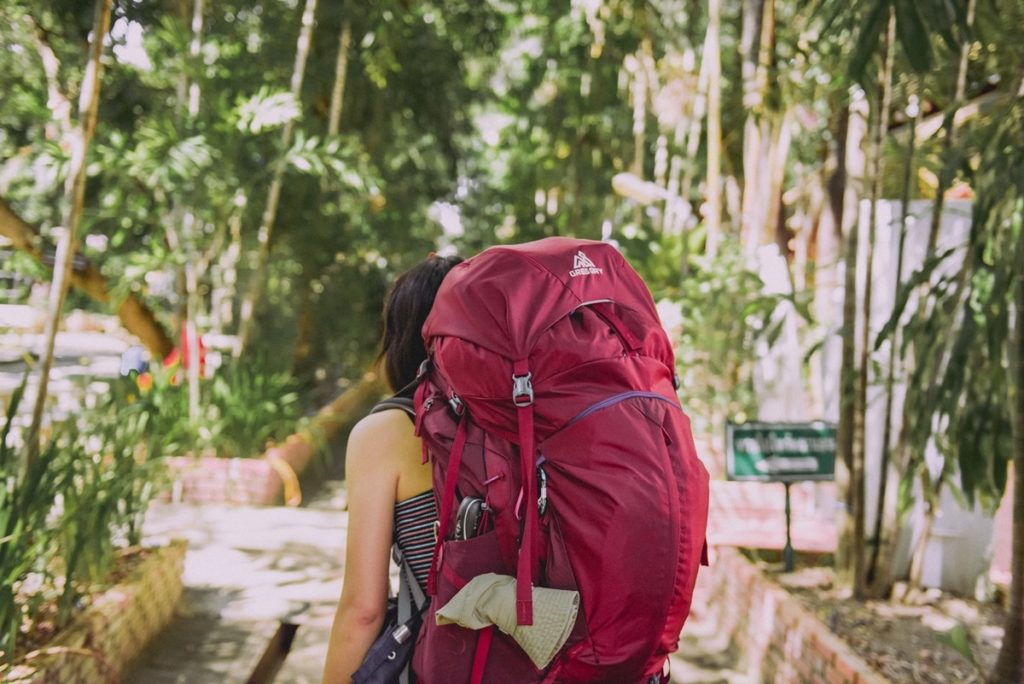
The Departure Checklist
- Passport (valid for longer than the length of your stay)
- Copy of your granted Working Holiday Visa
- Printing of your plane ticket
- Details of your travel insurance
- Driver’s licence
- Photocopy of your ID
Plan your Working Holiday in Australia 📖 Free eBook
Plan your trip in Australia with this free 60-page ebook written by former backpackers who have traveled the length and breadth of Australia.
Inside, you’ll discover everything you need to plan your journey. This ebook will guides you through the entire process, from applying for your visa to booking your flights and understanding the administrative procedures upon arrival.
With detailed insights and practical advice, you’ll navigate each step of your journey with ease. So, get ready to embark on your Australian adventure fully equipped and informed!
Going to Australia After 35? Here’s How!
Thinking about moving to Australia after turning 35? While the Working Holiday Visa (WHV) is a popular option for younger travelers, there are several visa pathways for those over 35 who dream of living Down Under.
✅ Working Holiday Visa (WHV) – UK Citizens Only
Since 2023, UK passport holders can apply for a WHV until age 35 (inclusive), meaning you can still apply up until your 36th birthday.
If you’re over 36 then here are some visa options to consider:
eVisitor (Subclass 651)
This visa allows you to travel to Australia to visit family and friends for up to twelve months. However, you can only stay in Australia for periods of up to 3 months at each entry. This visa is free of charge. It does not allow you to work legally in Australia.
For further information Tourist visas
Student visa (Subclass 500)
This visa has no age limit. You will be required to attend classes (part-time or full-time). This visa allows you to work 48 hours a fortnight. It is valid for the duration of your studies and 90 days thereafter.
For further information Student visa
Skills in Demand Visa (Sponsorship – Subclass 482)
You’ll need to find a company willing to hire you in Australia. This visa is valid for up to 4 years. Your job must be on the list of eligible jobs.
For further information : SID visa
Skilled Independent Visa (Subclass 189)
This visa is only available for certain occupations. Your profession must be on the list of qualified professions, and you must be invited to apply.
Partner Visa (Subclass 820)
If you have been in a relationship with an Australian for more than a year, you can apply for a partner visa. You’ll need to prove your relationship, and the application form is fairly comprehensive. Applications are processed within fairly long timescales.
For further information Partner Visa
Updated 11/06/2025





